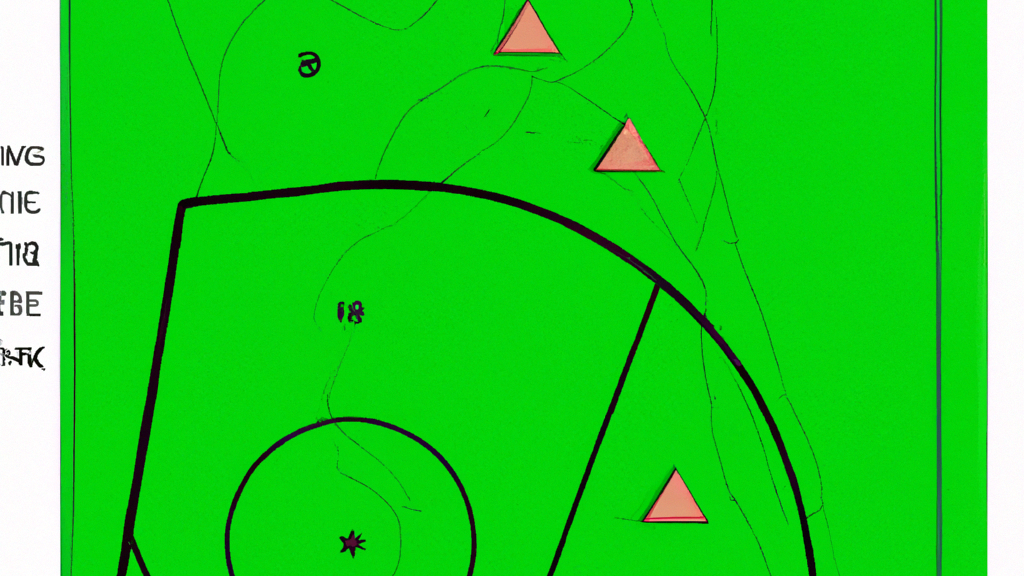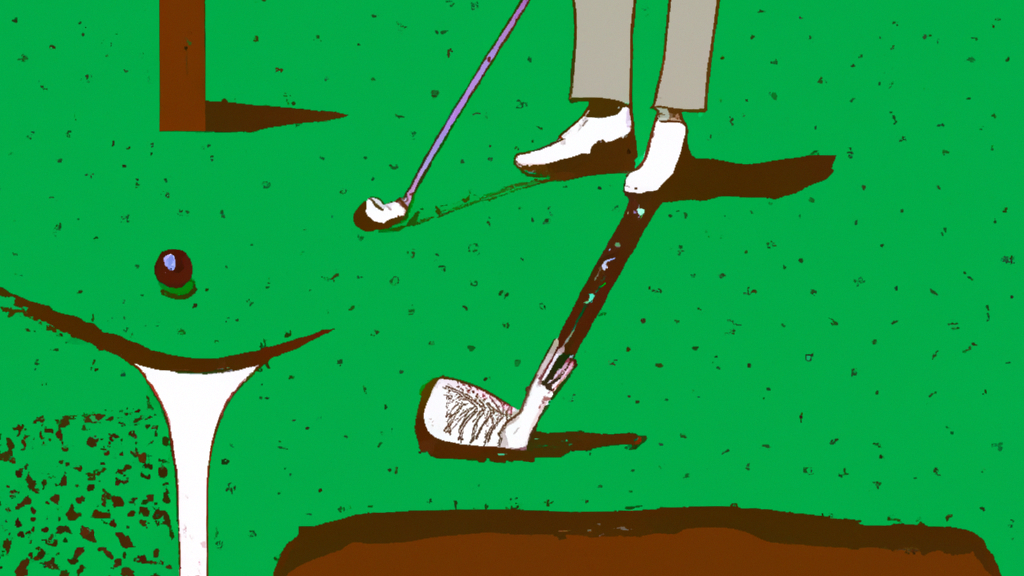GOLF COURSE MANAGEMENT: A GUIDE TO HERBICIDE USE
Golf courses are a beautiful sight to behold, with their lush green fairways and perfectly manicured greens. However, maintaining these pristine conditions requires a lot of hard work and dedication. One of the most important aspects of golf course management is herbicide use. Herbicides are essential for controlling weeds and other unwanted vegetation that can damage the course and affect playability. But with so many different types of herbicides available, it can be difficult to know which ones to use and when. That’s why we’ve put together this comprehensive guide to herbicide use in golf course management.
Whether you’re a golf course superintendent, a groundskeeper, or just a golf enthusiast, this guide will provide you with the knowledge and tools you need to keep your course looking its best. So, let’s dive in and explore the world of herbicides in golf course management!many

Golf Course Herbicide Use: A Guide to Types, Safety, and Benefits
Golf courses are a beautiful and serene place to spend a day, but they require a lot of maintenance to keep them looking their best. One of the most important aspects of golf course management is herbicide use. Herbicides are chemicals used to control weeds, and they are an essential tool for keeping golf courses looking pristine. In this guide, we will discuss the different types of herbicides, how to use them safely and effectively, and the benefits of using herbicides on golf courses.
Types of Herbicides
There are two main types of herbicides: selective and non-selective.
- Selective herbicides are designed to target specific types of weeds, while non-selective herbicides will kill any plant they come into contact with. Selective herbicides are the most commonly used type of herbicide on golf courses because they allow for the control of weeds without harming the turfgrass.
- Selective herbicides are further divided into two categories: pre-emergent and post-emergent. Pre-emergent herbicides are applied before the weeds have a chance to germinate, while post-emergent herbicides are applied after the weeds have already started to grow. Pre-emergent herbicides are typically used in the spring and fall, while post-emergent herbicides are used throughout the growing season.
How to Use Herbicides Safely and Effectively
Using herbicides safely and effectively is essential for maintaining a healthy and beautiful golf course. Here are some tips for using herbicides safely and effectively:
- Read the label: Always read the label before using any herbicide. The label will provide important information about the product, including the active ingredients, application rates, and safety precautions.
- Wear protective clothing: When applying herbicides, it is important to wear protective clothing, including gloves, long sleeves, and pants. This will help to prevent skin contact with the herbicide.
- Use the right equipment: Using the right equipment is essential for applying herbicides safely and effectively. This includes sprayers, nozzles, and pumps. Make sure that all equipment is in good working order before use.
- Apply at the right time: Applying herbicides at the right time is essential for their effectiveness. Pre-emergent herbicides should be applied before the weeds have a chance to germinate, while post-emergent herbicides should be applied when the weeds are actively growing.
- Follow application rates: Always follow the recommended application rates for the herbicide being used. Applying too much herbicide can damage the turfgrass, while applying too little may not be effective.
Benefits of Using Herbicides on Golf Courses
Using herbicides on golf courses has many benefits, including:
- Improved aesthetics: Herbicides help to control weeds, which can improve the overall appearance of the golf course.
- Increased playability: Weeds can make it difficult to play golf, as they can interfere with ball roll and affect the speed of the greens. By controlling weeds, herbicides can improve playability.
- Reduced maintenance costs: Weeds can be difficult and time-consuming to remove manually. By using herbicides, golf course managers can reduce the amount of manual labor required for weed control, which can save time and money.
- Improved turfgrass health: Weeds can compete with turfgrass for nutrients and water, which can lead to a decline in turfgrass health. By controlling weeds, herbicides can help to improve the health of the turfgrass.
Conclusion
Herbicides are an essential tool for maintaining a healthy and beautiful golf course. By using herbicides safely and effectively, golf course managers can improve the aesthetics and playability of the course, reduce maintenance costs, and improve the health of the turfgrass. When using herbicides, it is important to read the label, wear protective clothing, use the right equipment, apply at the right time, and follow application rates. With proper herbicide use, golf courses can remain a beautiful and enjoyable place to spend a day.

- Golf Course Management | Envu Environmental Science US
Envu has a great lineup of golf course management products to keep … Golf Solutions Guide … Effective herbicide control when you need it most. Acclaim. - Golf Course Maintenance: A Beginner’s Guide to Streamlining O&M
Oct 5, 2022 … Golf course maintenance is more complicated than mowing a lawn and … These are post-emergent herbicides used to treat both broadleaf and … - COLORADO GOLF INDUSTRY BEST MANAGEMENT PRACTICES …
practices; integrated pest management; pesticide … BMPs in order to guide golf courses in balanc- … Fertilizers Used in Golf Course Management. - Pesticide Management Program
Follow the links to the specific credential you are interested in for instructions on submitting an application. Please use the online system for those … - Lambert (Bert) McCarty
A guide covering all major herbicides used in these markets. … Management of Bentgrass Golf Greens in Heat-Stressed Environments. Golf Course … - Taming A Golf Course’s 10 Toughest Turf Weeds | BrightView
If any of these offenders make an appearance on your golf course, use this guide for effective post-emergent weed control solutions. - Golf Course Maintenance Guide
May 5, 2021 … Check out the EPA pesticide storage guidelines for more information on chemical use and storage. Ponds. Ponds are a part of all golf courses. - Herbicides | US EPA
Mar 2, 2023 … Herbicides are used in forest management to prepare logged areas … herbicides are applied to lawns, parks, golf courses and other areas. - Selective and non-selective herbicide options for golf course …
Jun 27, 2022 … A weed control plan for golf courses should include a … Fusilade II is a grass herbicide that is safe to use around ornamental plants. - Golf Course Pest Control Commerical Applicator – Classification 6 …
Pesticides are valuable components of a turfgrass management program, but pest manage ment includes more than selecting and applying the appropriate pesticide.
Fascinating facts about Golf Course Management: A Guide to Herbicide Use you never knew
- The first recorded game of golf was played in Scotland in the 15th century.
- Golf is one of only two sports to have been played on the moon (the other being javelin).
- The longest hole in professional golf is the 7th hole at Satsuki Golf Club in Japan, measuring a whopping 909 yards.
- Augusta National Golf Club, home of The Masters tournament, was originally an indigo plantation before it became a golf course.
- In some countries such as China and North Korea, playing golf used to be illegal due to its association with Western culture and capitalism.
- Professional golfer Tiger Woods has won more than $120 million dollars throughout his career from prize money alone.
- Caddies were originally hired by Scottish royalty to carry their clubs during games of golf because they were too lazy or unfit to do so themselves.
- In many cultures around the world, it is considered bad luck for someone else besides yourself or your caddy to touch your ball during a game of golf





